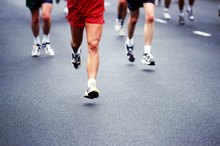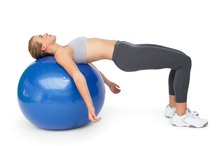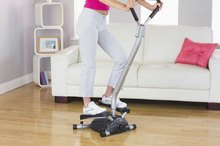Quadriplegic Exercises
Quadriplegia, also known as tertraplegia, refers to a spinal cord injury above the first thoracic vertebra or neck, resulting in paralysis in all four limbs. In addition to paralysis of the arms and legs, the chest and abdominal muscles are also impaired, resulting in weakened breathing and an inability to clear the chest and cough.
If you are experiencing serious medical symptoms, seek emergency treatment immediately.
Regular exercise is essential to ensure the circulation of oxygenated blood to your joints and muscles, and prevent muscle shortening and spasticity that results from prolonged sitting.
Exercise also improves your lung and heart function, lowers cholesterol and high blood pressure, and prevents blood clots that may lead to a deep vein thrombosis, as well as coronary heart disease and osteoporosis. Speak with your physician before starting an exercise program.
Breathing Exercise
Breathing exercise are important to improve your cardiac and lung function, and ensure that your respiratory system remains strong. It increases your lung capacity and expansion, and reduces your risk of secondary respiratory complications including pneumonia, notes the Spinal Cord Injury Information Network 234. Begin by taking a deep breath in. Hold this breathe for five seconds and slowly breathe out.
Next, quickly take a deep breath in, taking in the maximum amount of air that your lungs can contain and breathe out as fast a possible. Next, take a deep breathe in and hold that breathe.
As you continue to hold that breathe, take two more breathes inward and then slowly exhale.
Finally, take a deep breathe inwards, and exhale while out counting out loud as far and as long as possible. Perform these breathing exercises twice in the morning and twice at night to ensure that your respiratory system is functioning at optimum capacity.
- Breathing exercise are important to improve your cardiac and lung function, and ensure that your respiratory system remains strong.
- Finally, take a deep breathe inwards, and exhale while out counting out loud as far and as long as possible.
Knee to Chest Exercise
How to Strengthen the Patella Tendon
Learn More
Quadriplegics are at greater risk of developing muscles tightness and shortening in the hips, chest, wrist and shoulders. Extended periods of sitting causes these muscles to weaken and become spastic. Range of motion exercises are essential to maintain the circulation of oxygenated blood and nutrients to these joints and muscles, and prevent joint contractures.
In addition to maintaining the integrity of your joints, range of motion exercise improves your posture, helps to prevent pressure sores, pain and stiffness, and reduces your injury potential. Enter a sitting position with both legs extended forward. Place your right arm under your right knee and place your left hand over that knee.
Pull your right knee as far as possible towards your chest and hold that position for five seconds. Return your leg to the starting position and perform one set of 10 repetitions on each leg, once daily.
- Quadriplegics are at greater risk of developing muscles tightness and shortening in the hips, chest, wrist and shoulders.
- In addition to maintaining the integrity of your joints, range of motion exercise improves your posture, helps to prevent pressure sores, pain and stiffness, and reduces your injury potential.
Knee to Chest to Side
Begin by sitting upright in your wheelchair or leaning against the headboard of your bed.
Place your left hand underneath your left knee and pull that knee towards your chest. Hold this position for 10 seconds. Next, place your left wrist and forearm on the outside of your left knee and push your left knee towards your right leg. Be sure to be gentle when performing this movement.
Next, place your left wrist and forearm on the inside of your left knee and move your left knee to the opposite the side towards your bed or wheelchair.
Hold this position for 10 seconds and relax. Perform one set of 10 repetitions, once daily on both legs.
- Begin by sitting upright in your wheelchair or leaning against the headboard of your bed.
- Place your left hand underneath your left knee and pull that knee towards your chest.
Leg Rotation Exercise
How to Stretch the Quadratus Lumborum
Learn More
Begin by lying supine or flat on your back. Both legs should be extended forward and relaxed. Have your assistant place one hand on the top of your right thigh and the opposite hand underneath that same thigh.
Next, slowly roll your right leg from side to side. At the apex of each rotation, hold for 10 seconds. Perform one set of 10 repetitions, once daily to ensure that your joints, muscles and ligaments do not stiffen and contract.
- Begin by lying supine or flat on your back.
- Both legs should be extended forward and relaxed.
Related Articles
References
Writer Bio
Jessica Wellons has been writing professionally since 2007. She is a scientific writer and fervent health enthusiast writing for The American College of Preventative Medicine and Writing Assistance Inc. She is pursuing a doctoral degree in clinical medicine from the University of North Carolina and has a Master of Science in clinical pathology from the University of North Carolina.









